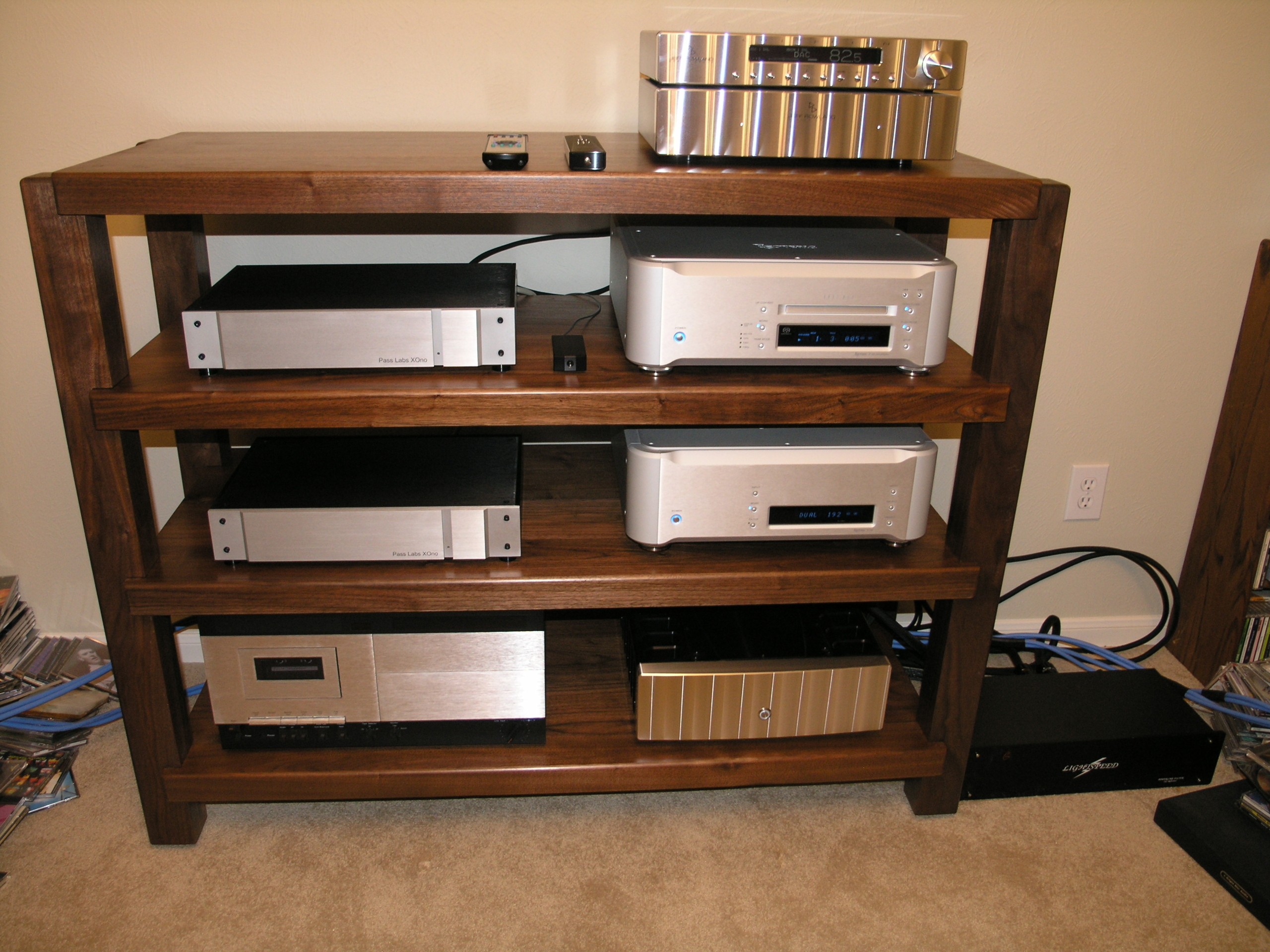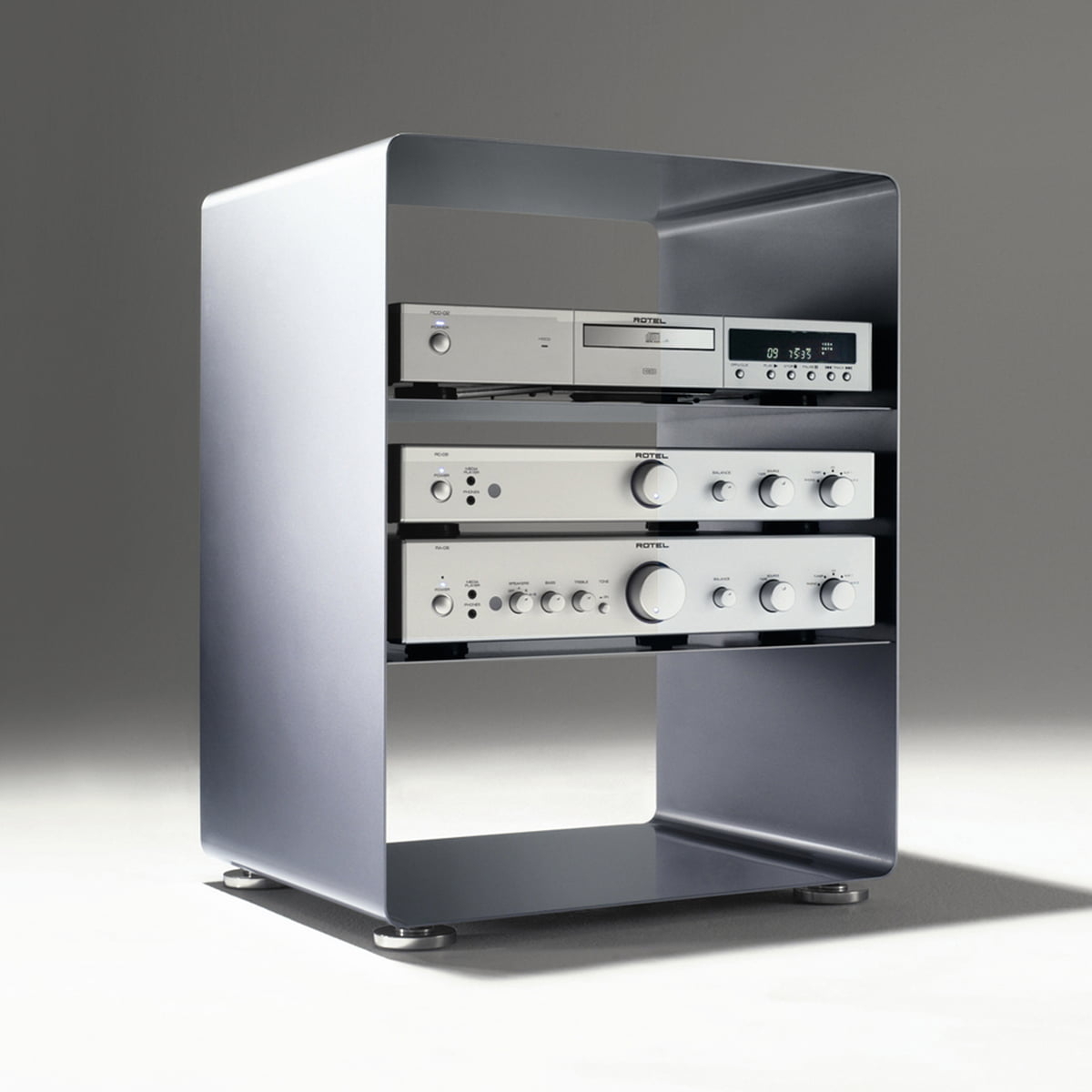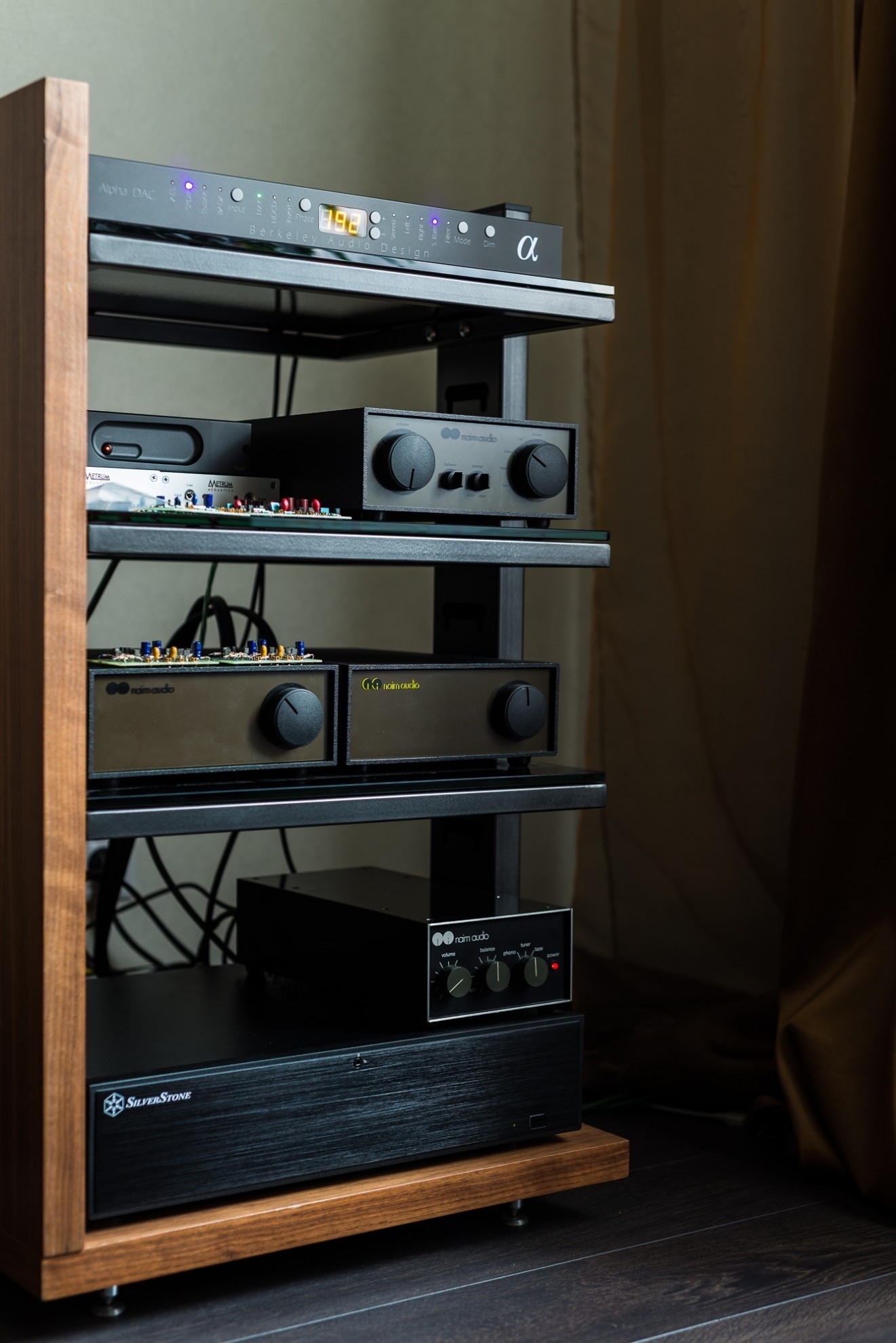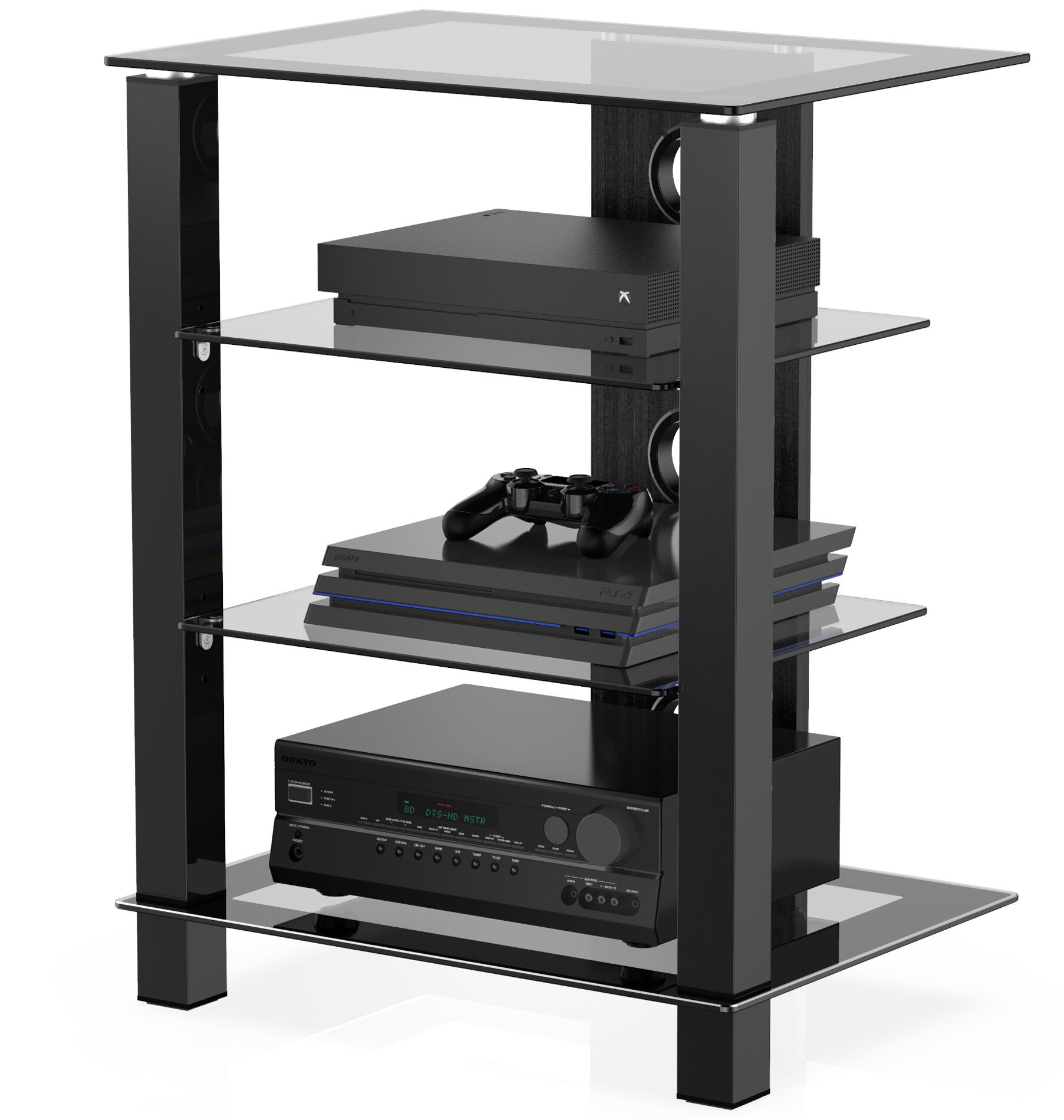Audio enthusiasts, are you tired of your audio components cluttering up your space and compromising sound quality? It’s time to revolutionize your audio setup with Audio Component Rack Systems!
Take Control of Your Space
Audio components can quickly become an eyesore and take up valuable floor or desk space. With Audio Component Rack Systems, you can reclaim your room and create a dedicated space for your audio equipment. These systems provide vertical storage, allowing you to stack your components neatly and free up valuable floor area.

Enhanced Audio Performance
Besides optimizing space, Audio Component Rack Systems are crucial for maximizing the performance of your audio gear. They provide a stable and vibration-free platform, reducing resonances that can distort the sound of your speakers or audio interfaces.

Main Points: Audio Component Rack Systems for Space Optimization and Enhanced Audio
Audio Component Rack Systems offer numerous benefits, including:
- Improved space utilization
- Reduced clutter
- Enhanced audio quality
- Protection from external vibrations
Personal Experience: Powering Up My Audio System
When I first got into audio, I struggled with the constant clutter of wires and equipment. I stumbled upon Audio Component Rack Systems and decided to give them a try. The results were remarkable! Not only did I gain much-needed space, but the improved stability also boosted the clarity and depth of my sound. It was like unlocking a new level of audio fidelity in my own home.

Understanding Audio Component Rack Systems
Audio Component Rack Systems are typically made of durable materials like wood, metal, or glass. They come in various sizes and configurations to accommodate different components and room layouts. Some systems feature adjustable shelves or drawers for maximum customization. Proper ventilation is crucial, ensuring your components don’t overheat.

History and Myths: Unraveling the Legend
Audio Component Rack Systems have been around for decades, evolving alongside audio technology. Contrary to some myths, using a rack system does not result in sonic degradation. In fact, it can improve sound quality by minimizing vibrations that adversely affect the performance of turntables, CD players, and other equipment.

Hidden Secrets: The Art of Audio Rack Placement
While Audio Component Rack Systems offer significant benefits, their placement is essential for optimal performance. Avoid placing them near direct sunlight or heat sources, as it can damage the equipment. Proper spacing between components ensures adequate airflow and reduces the risk of overheating. Additionally, consider the weight distribution on each shelf to prevent your rack from tipping.

Recommendations: Choosing the Right Audio Rack
When choosing an Audio Component Rack System, consider the following factors:
- Size and capacity: Make sure it can accommodate your current and future components.
- Materials and construction: Opt for durable and sturdy materials that can withstand the weight of your equipment.
- Ventilation: Ensure the rack provides adequate airflow to prevent overheating.
- Cable management: Look for racks with built-in cable management features to minimize clutter.
Audio Component Rack Systems: The Science Behind Space Optimization and Enhanced Sound
Audio Component Rack Systems optimize space by utilizing vertical storage, allowing you to stack components vertically instead of horizontally. This maximizes floor space utilization and reduces clutter in your listening area. Additionally, they provide a stable platform for audio components, minimizing vibrations that can interfere with sound quality. The rigid construction and sturdy materials dampen external vibrations, ensuring optimal audio performance.

Tips for Maximizing Your Audio Component Rack System
Make the most of your Audio Component Rack System with these tips:
- Distribute the weight of your components evenly to prevent the rack from tipping.
- Use cable ties or velcro straps to manage wires and cables, keeping your setup organized and tidy.
- Leave enough space between components for proper ventilation and heat dissipation.
- Consider adding a shelf or drawer to the rack for additional storage of accessories or records.
Unveiling the Secrets of Audio Component Rack Systems
Audio Component Rack Systems are more than just furniture; they play a crucial role in maximizing the performance of your audio equipment. By providing a stable platform and reducing vibrations, they ensure your speakers deliver the clearest possible sound. Additionally, the vertical stacking design maximizes space utilization, allowing you to create a dedicated audio zone without sacrificing precious floor area.

Fun Facts: Exploring the Quirks of Audio Component Rack Systems
Did you know that the first audio racks were designed specifically for storing phono records? Today, they’ve evolved to accommodate a wide range of audio components, including turntables, amplifiers, CD players, and more. Another interesting fact is that some high-end audio racks incorporate acoustic dampening materials to further minimize vibrations and improve sound quality.

How-To Guide: Setting Up Your Audio Component Rack System
Follow these steps to set up your Audio Component Rack System:
- Choose a suitable location for your rack, ensuring it’s level and sturdy.
- Assemble the rack according to the manufacturer’s instructions.
- Place your audio components on the shelves, distributing the weight evenly.
- Connect all audio and power cables securely.
- Organize and manage cables using cable ties or velcro straps.
What Ifs and Buts: Exploring Alternatives to Audio Component Rack Systems
If you don’t have the space or budget for a dedicated Audio Component Rack System, there are alternative solutions to consider.
- Stackable components: Some components, like amplifiers and CD players, can be stacked on top of each other.
- Wall-mounted shelves: Install floating shelves on the wall to store components vertically.
- Furniture with built-in storage: Look for tables or consoles that offer dedicated spaces for audio components.
Listicle: 5 Must-Have Accessories for Audio Component Rack Systems
Enhance your audio setup with these essential accessories for your Audio Component Rack System:
- Cable ties or velcro straps: Keep cords organized and clutter-free.
- Surge protector: Protect your components from power surges and fluctuations.
- Audio isolation pads: Further reduce vibrations from external sources.
- Shelf liners: Add a touch of style and protect shelves from scratches.
- Cleaning supplies: Regularly clean your rack and components to maintain optimal performance.
Question and Answer: Common Queries about Audio Component Rack Systems
Q: Can using an Audio Component Rack System degrade sound quality?
A: No, using a rack system can actually improve sound quality by reducing vibrations.
Q: Do Audio Component Rack Systems take up a lot of space?
A: Rack systems can vary in size, but they maximize vertical space utilization, saving floor area.
Q: What materials are Audio Component Rack Systems typically made of?
A: Common materials include wood, metal, and glass, providing durability and stability.
Q: How often should I clean my Audio Component Rack System?
A: Regularly cleaning your rack and components helps maintain optimal performance and longevity.
Conclusion of Audio Component Rack Systems: Optimize Space And Enhance Audio Performance
Audio Component Rack Systems are a must-have for any audio enthusiast seeking to optimize space and maximize audio quality. By providing vertical storage, reducing clutter, and minimizing vibrations, these systems offer a superior way to house and protect your precious audio equipment. Whether you’re a music lover, a recording artist, or a home theater enthusiast, an Audio Component Rack System is an investment in enhanced sound and space efficiency.